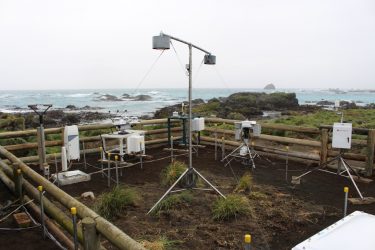
It turns out not all clouds are created equal. Though Seattle presents an ideal location for cloud-gazing, it can’t reproduce the unique clouds in a part of the world thought to play a key role in the planet’s climate.
The vast Southern Ocean circling Antarctica soaks up a large portion of the carbon emissions taken up by the oceans and stores some of the extra heat trapped by the carbon emissions that remain in the air. Clouds play a key role, influencing the transfer of heat and light to the surface, but knowledge of these clouds’ properties and their impacts on the surface is hazy.
Roger Marchand, a UW research associate professor of atmospheric sciences, is leading a project to study the clouds above the Southern Ocean. Seeing how the cloud droplets, small bits of dust, sea spray, and other materials on which cloud droplets form, ocean and sun interact will help improve global climate models.
The 2-year project is called the Macquarie Island Cloud and Radiation Experiment, or MICRE, and is sponsored by the Department of Energy. It will collect new data for clouds and precipitation in the southernmost seas that were installed on the island in late March.
Read more at UW Today »
